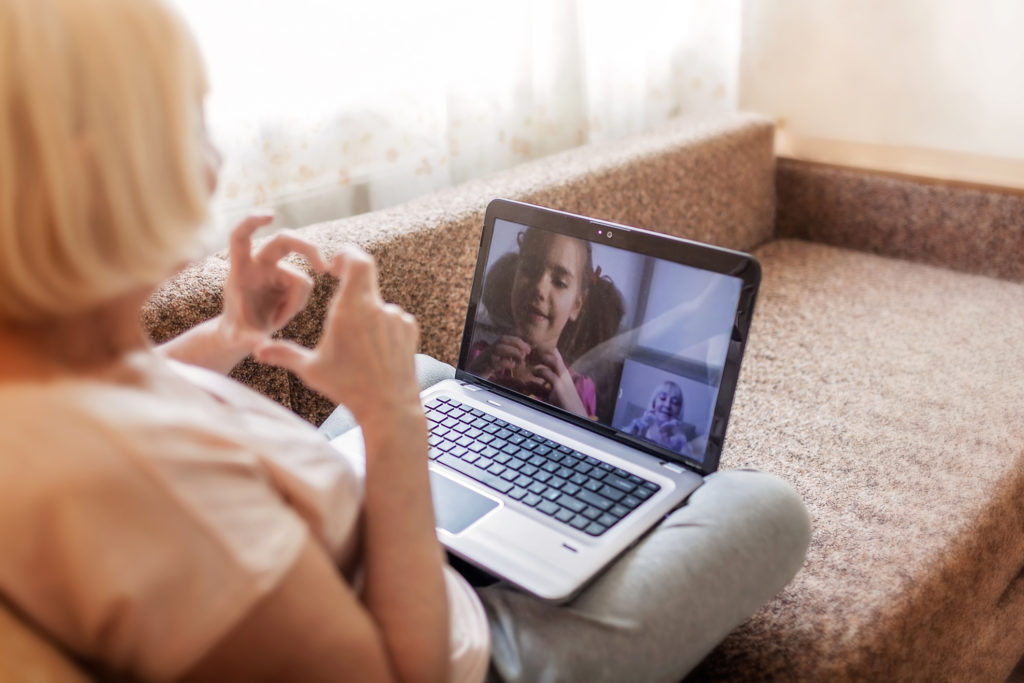
The recent pandemic has shed light on the significance of many everyday activities that we once took for granted. Grocery shopping, in-person meetings and most importantly, connecting with loved ones – have drastically changed in the blink of an eye. Still, our ability to pivot and adjust is equally impressive. Delivery services, collaboration platforms, and video chat capabilities have all made the recent months a little easier. However, one demographic that has been greatly affected and unfortunately isolated from the rest of the world is our senior population residing in retirement communities and living facilities. Right now, more than ever, the ability for these residents to connect, share, and communicate is of utmost importance for their mental and physical health, as well as for the success of these facilities.
Senior living facilities and retirement communities are currently experiencing closures to the outside world and resident isolation in order to protect the residents and staff. While the notion is necessary given the health risks the coronavirus poses for this age group, the lack of communication to the outside world also presents a negative outcome for residents. Without social interaction with peers and visits from loved ones, seniors still need human connection and outside interaction to stay healthy. In fact, according to A Hand to Hold, “elderly people who are socially engaged and maintain or increase their level of social activity have a slower progression of health decline than their peers who become more socially isolated.” Without the opportunity for residents to participate in group activities such as game night, physical fitness classes, or simply visiting their neighbors, seniors can become disengaged. This poses the risk for dementia, depression, and even Alzheimer’s. Wireless connectivity provides residents the ability to communicate with loved ones both inside and outside their living community, enables them to carry on with physical fitness, and continue to maintain their social lives – all from the safety of their rooms.
The use for Wi-Fi capabilities in senior communities go beyond enabling senior residents to logon to Facebook or FaceTime with their grandchildren. While those reasons are extremely important for residents’ social connectedness amid the COVID-19 pandemic, wireless connection also permits telehealth capabilities, state-of-the-art medical and facility controls, and gives residents the freedom to contact staff and healthcare professionals. A recent study revealed that 53 percent of senior respondents “said they used the Internet to get critical information about healthcare and other medical issues they were experiencing.” Therefore, residents utilize wireless connection for more than socializing – they are far more technologically advanced than previous generations and use Wi-Fi in meaningful ways. Furthermore, contactless medical visits and appointments are critical in the age of COVID-19. Wireless connection makes it effortless to conduct remote routine check-ups with residents via video conferences – protecting both the staff and the senior from potential COVID-19 transmission. Internet connectivity also enables to family members to be part of these remote appointments without having to be on premise. Additionally, the use of implementation of smart home applications greatly decreases the need for caregivers to visit in-person. With wireless connectivity, facility operators, caregivers, and even residents can control security applications, appliances, lighting, and digital thermostats from any location. The ability to access and manage these features is beneficial for not only residents, but for facility operators as well. With this control, residents limit in-person interaction with others and facility operators save time, resources, and cut costs by having remote access. Therefore, Wi-Fi connectivity is of utmost importance during these unprecedented times for the health and safety of the residents and staff of senior living facilities and retirement communities.
As previously stated, the generation moving into senior living facilities and retirement communities is far more technologically savvy than their predecessors. Because of this, they expect fast, reliable Internet. Additionally, the growth of incoming residents is “projected to more than double from 46 million today to over 98 million by 2060.” For owners and operators of facilities, that means guaranteeing this fifth utility is available. Doing so will be a crucial differentiator among the competition, especially during these times of uncertainty. Furthermore, as the pandemic evolves and progresses, senior living facilities will be heavily scrutinized on how they themselves adjust to keep residents and staff safe. The implementation of Wi-Fi capabilities throughout entire campuses will help alleviate the stress of adhering to social distancing guidelines with telehealth capabilities, health monitoring and mobility assistance devices, as well as enhanced security control. Ultimately, wireless connectivity is the factor that sets senior living facilities apart, it aids in keeping residents and staff safe, and ensures facilities are adhering to CDC guidelines and regulations.
Wireless connectivity has proven to be an invaluable asset. We have relied on it to keep in constant communication, keep businesses open, and keep each other safe. The health risks that the coronavirus poses for the senior residents of retirement communities and living facilities are severe. It is up to owners and operators of these facilities to recognize the importance and the necessity of implementing wireless capabilities, especially now, especially during the age of COVID-19.
Contact Business Information Group to learn how our team of wireless experts can help connect what matters most for our senior population through the design, implementation, and monitoring of indoor and outdoor wireless networks.